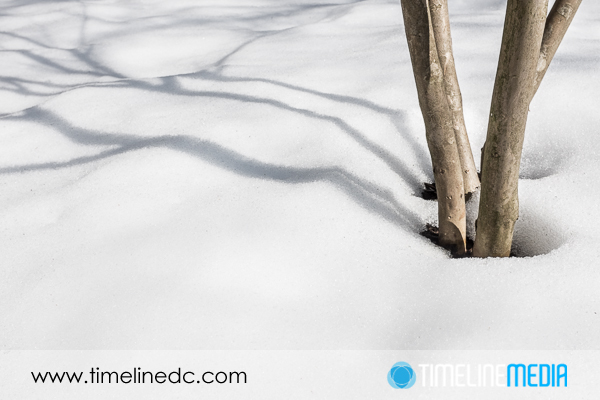
We are starting a thaw out from last week’s wintry weather! It has taken a week, but finally we are starting to see some grass peeking out from under the snow. While it was falling heavily, I did not have the urge to take many photos. I am sure that there were some spectacular opportunities to do so. However, it just did not happen for me this time. Perhaps it was the preparation for the big ballroom dance event that stopped me from getting out. I have all the cameras and lenses to make something out there but I missed an opportunity.
Adjusting Exposure
With the shooting of the event now completed, and the warmer air outside, I wanted to get some photos before ALL the snow had melted. Going out there with the Fuji X100s made it easy to illustrate the first lesson that everyone learns when photographing in the snow. You need to “overexpose” or add more light to the scene than you normally would when taking photos.
The meter built into your camera is designed to measure the light coming in through the lens. It will tell you what settings will make for a balanced exposure. Technical photographers will call this calculating the exposure for “middle gray”. In other words, the brightest areas will not be too bright that they lose detail. Concurrently the darkest areas will not be too dark to lose detail. Unfortunately, these settings will make your snow look like “middle gray” as in the example here:
Adjusting Defaults
To restore the snow to its pretty white brightness, I had to add 1 stop of exposure, or overexpose the meter reading by one stop to get a nice white from the snow. Either the shutter speed is slowed down by one stop, or your can close down the aperture by one stop. Because I do not care to see any detail in the snow as it does not add to the photo, go ahead and let it be too bright. It is only a base or background for the frame, and does not need to be as detailed as the branches of the tree.
This technique not only works for snow, but works for window light, backlighting, or any other elements that are in your frame, but are not the main subject. They can be blown out, or overexposed without affecting the portrayal of your subject – the one thing you do want to see.
TimeLine Media – www.timelinedc.com
703-846-8208









